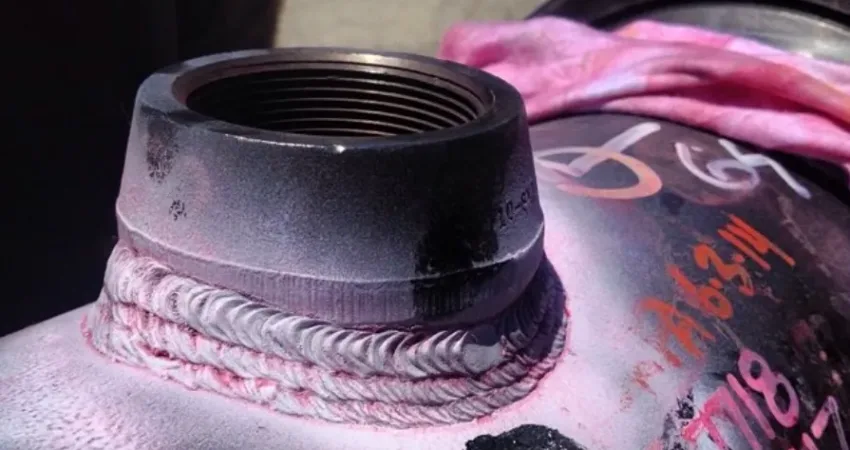Aged Penetrant Materials
Does using aged penetrant materials reduce the likelihood of detecting fatigue cracks?
There is a body of research going on at a couple of places that have to do with penetrant inspection. At Sandia laboratories, the following question was investigated: “If a field inspector accidentally used aged penetrant materials, would that reduce the likelihood of detecting fatigue cracks?” To investigate this question, a careful laboratory test was designed, using specimens containing low cycle fatigue cracks in Inconel-718 and titanium 6-4. these specimens were tested using Method A, level 4 water washable penetrants, and form a dry powder developer. Penetrants from three manufacturers were used, with comparisons between fresh materials and materials that had been stored in unopened containers for 6 to 10 years. Met-L-Chek penetrants were one of the three selected for the tests. Five test runs were made on each of the fresh penetrants and each of the aged penetrants on the Inconel samples, and an equal number of tests was made on the titanium samples.
The brightness of the flaws located in the tests on the Inconel samples was then read with a spot meter, and the results of the five runs were averaged. It was found that there was no significant difference between the new and the aged penetrants from manufacturers A and B, but that the penetrants from manufacturer C showed higher brightness when the aged penetrant was used in comparison to when the new penetrant was used. For the tests made on the titanium samples, again there was no significant difference between the fresh and the aged penetrants from manufacturers A and B, but once again, the materials from manufacturer C showed higher brightness results from the aged product.
The report concludes that manufacturer C generally had lower crack brightness levels for aged and new penetrant when compared against other manufacturers tested.
As a final note, we will just add that Met-L-Chek® was not manufacturer C. “Nuff said”.
Iowa State University also has an ongoing program investigating various aspects of the penetrant inspection process. Members of their research team have already delivered talks about their results at national ASNT meetings. Now the team working on these questions is to convene immediately prior to the Spring ASNT meeting in Orlando. The stated purpose of the meeting is to review the results of their efforts and to discuss ways to implement those results that promise improvement to the inspection process. Met-L-Chek® will be in attendance and will report on the results of the meeting in a future issue of this newsletter.


